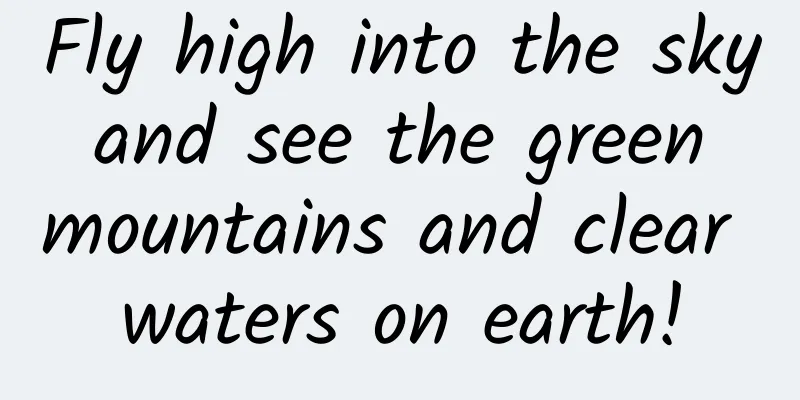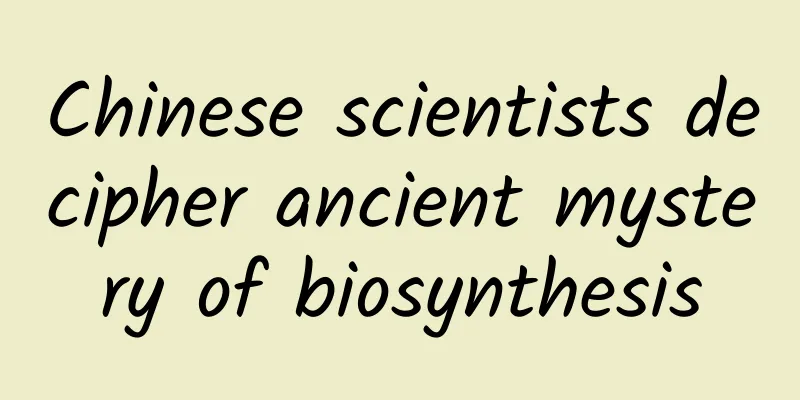Fly high into the sky and see the green mountains and clear waters on earth!

|
On August 4, the world's first forest carbon sink active and passive joint observation remote sensing satellite, the Terrestrial Ecosystem Carbon Monitoring Satellite, was successfully launched at the Taiyuan Satellite Launch Center. The name "Jumang" given to it by netizens represents the wood god and spring god in ancient Chinese mythology, adding a touch of romance unique to the descendants of Yan and Huang. ▲ Long March 4B rocket takes off (Photo by Deng Yunan) In 2012, the 18th CPC National Congress first proposed the concept of building a beautiful China, emphasizing the importance of ecological civilization construction. The Fifth Academy of China Aerospace Science and Technology Corporation began to think about a question: what role can satellite remote sensing services play? They boldly proposed a concept: to develop a satellite to observe green mountains and clear waters. At that time, there was no satellite specifically designed for vegetation detection in the world. The satellite development team faced a brand new challenge. In order to accurately understand the needs of forestry remote sensing, they went to various places to study and research forestry knowledge. Cao Haiyi, the chief designer of the satellite, gave a positive answer: "We can solve this problem by using space-based remote sensing." The satellite project was officially approved five years ago. From the beginning of the planning phase, the satellite development team has overcome technical difficulties such as thermal control, payload control, and data transmission. ▲ Schematic diagram of the work of the terrestrial ecosystem carbon monitoring satellite Understand forest resources and have a clear understanding of carbon balance accounts Achieving "carbon neutrality" is like a digital calculation of "carbon sources" and "carbon sinks" in nature, and ultimately expecting to achieve "balance of income and expenditure". To have a clear understanding of the carbon income and expenditure accounts, we must first explore forest resources. Obtaining high-precision vegetation height and area information is the key. Corresponding to the satellite design, the multi-angle multi-spectral camera and lidar it carries can better measure the accumulation and biomass of vegetation by obtaining ground images and height information of the forest, reflecting the carbon storage of the ecosystem. Zhang Xinwei, deputy chief designer of the satellite, said that general remote sensing applications usually adopt the method of vertical earth observation, but if the observation angle can be increased, different reflectivity information of the same surface object can be obtained, thereby improving the recognition accuracy and inversion accuracy of forest structure parameters. The multi-angle multi-spectral camera carried by this land ecosystem carbon monitoring satellite can obtain multi-spectral image data of the same ground scene from five directions , obtaining more detailed and reliable three-dimensional spatial structure information of the surface. "Previously, a camera passed over the top of the head and observed vertically, and could only see the top of a person's head. Now there are more shooting angles, and we can not only see the top of the head, but also the face, back of the head, chest and back, and other multi-faceted and multi-dimensional information." Jia Fujuan, chief designer of the multi-angle and multi-spectral camera at the 508 Institute of the Fifth Academy, gave an example. ▲ The amount of basic reference information of the satellite multispectral camera's 5-angle earth observation diagram has increased, so that not only can the forest crown be seen clearly, but also its sides, and the density distribution, type, health, growth and even disease and pest conditions of vegetation can be easily obtained. In order to more comprehensively measure the accumulation of vegetation, the satellite development team also needs to detect the vertical structure of the forest. Since optical remote sensing has certain limitations in detecting the vertical structure of the forest, active detection technology of laser radar has emerged. Sun Li, chief designer of the multi-beam lidar of the 508th Institute of the Fifth Academy, explained its principle: When the laser is irradiated from the radar to the forest, the beam first reaches the treetops, part of the laser is reflected back by the tree canopy, and another part of the laser penetrates downward along the gaps and is reflected back by the leaves and branches in the middle of the tree. The last part of the laser reaches the ground and is reflected by the ground. In this way, the echoes of the tree canopy, the middle, and the ground can be obtained. The tree height is calculated based on the time difference of the echo, the tree species is determined based on the energy ratio, and even the growth of the tree can be known. ▲ Schematic diagram of satellite lidar measurement height Satellite observations are also interfered by atmospheric suspended particles, but multi-angle polarization imagers and atmospheric lidar can effectively solve this problem. They can measure auxiliary information such as clouds and atmospheric particles, eliminate interference factors for satellites to accurately monitor forest carbon reserves, ensure more accurate atmospheric correction, and achieve high-precision quantitative remote sensing measurement of forest vegetation biomass. ▲ Schematic diagram of satellite atmospheric PM2.5 monitoring Chasing chlorophyll fluorescence to find a secret message in the vast sea of books Forests play an important role in carbon sequestration, absorbing 45% of my country's annual average anthropogenic carbon emissions during the same period. But will forests continue to absorb carbon dioxide? If the amount of carbon dioxide that forests can absorb is limited, when a certain saturation point is reached, can they continue to help humans slow down global warming? In order to have the ability to monitor forest carbon sinks with high precision, using satellites to obtain vegetation information with high precision is only the first step. The next step is to look at the productivity of the vegetation, that is, the degree of carbon absorption by the vegetation. "Plants 'breathe' through photosynthesis, and chlorophyll is a key influencing factor in this process. High-precision chlorophyll fluorescence mapping is also an important part of satellite support for high-precision carbon sink monitoring." Mao Yilan, deputy chief designer of the satellite, introduced that the hyperspectral detector carried on the satellite can capture the chlorophyll fluorescence of vegetation, reflect the strength of vegetation photosynthesis, and then quantitatively monitor the carbon absorption capacity of the ecosystem. Capturing chlorophyll fluorescence is not as easy as imagined. Its spectral range is narrow, only nanometers wide. In the chaotic natural light, searching for it is like looking for a secret code in an endless book. The satellite development team innovatively used the grating spectroscopic principle to increase the spectral resolution by 10 times, which can separate the turbid light in the range of 670 nanometers to 780 nanometers into 1,100 gradient colors, effectively finding chlorophyll fluorescence hidden in a gradient color corner. ▲ Schematic diagram of chlorophyll fluorescence capture by satellite hyperspectral detector Wang Weigang, chief designer of the hyperspectral detector of the 508th Institute of the Fifth Academy, said: "This is equivalent to having a magical eye in the sky above the earth, telling us what level of photosynthesis is taking place in the mysterious and beautiful forest, what scale of carbon dioxide is being absorbed, and to what extent carbon neutrality has been achieved..." Calculate global carbon sinks to address climate change and participate in global governance "The land ecosystem carbon monitoring satellite needs to complete comprehensive observation tasks through four payloads, including multi-beam lidar , multi-angle multi-spectral camera , hyperspectral detector , and multi-angle polarization imager ," said Huang Jin, chief designer of the satellite. Satellite missions are numerous and their working modes are extremely complex. There are as many as 47 combinations of payload working modes. Different payload combinations can obtain different data to meet the needs of different users. "It is indeed difficult." Cao Haiyi admitted that in order to quantitatively monitor the status of forest vegetation and meet the needs of carbon sink monitoring, the research and development team must not only overcome the technical difficulties of payload development and allow the satellite to support more applications, but also consider the ease of use and control of the satellite. Among them, the processing of satellite data is a key link. This process must combine the relevant experience of the forestry department, convert remote sensing satellite data into ground language, and continuously invert and iterate the data monitored by the satellite in real time. ▲ Wang Xiang, the satellite commander of the development team, revealed that after the successful launch and completion of the in-orbit test, the satellite will be officially put into operation, and it will take about two months to complete a return cycle to achieve effective global coverage. By then, the information obtained by the satellite will be analyzed and processed to form carbon emission reports for different regions, quantitatively evaluate the carbon sequestration effects of the country and even the world, and significantly enhance my country's ability to respond to major climate change strategies and actively participate in global governance. In fact, in addition to providing new impetus for addressing climate change, land ecosystem carbon monitoring satellites also play an important role in forestry carbon sink trading . Nowadays, carbon emissions of various countries are mutually restricted, so how can satellites help in measuring carbon sinks or conducting carbon sink trading? Wang Xiang pointed out that it can achieve high-precision quantitative remote sensing measurements of global forest vegetation biomass, aerosol distribution, and chlorophyll fluorescence, which can better infer the global carbon sink status and provide effective data support for carbon sink trading. In addition to forest carbon sink monitoring, land ecosystem carbon monitoring satellites can also be widely used in environmental protection, surveying and mapping, meteorology, agriculture, disaster reduction and other fields, supporting crop assessment, plant disease and pest monitoring, disaster emergency imaging and other work. "To make good use of this satellite, three things need to be done in the future." Wang Xiang said, first, the number of satellites and detection methods should be increased; second, the accuracy of data should be improved through cooperation with ground systems; third, data sharing should be increased to play a greater role in international cooperation. |
<<: Popular Science Illustrations | One picture shows how smart shipping opens a new chapter
Recommend
The latest research finds that the secret to the longevity of centenarians lies in their intestinal microorganisms?
Let's talk about aging today. Think about it,...
China Automobile Dealers Association: my country's automobile dealer inventory warning index in May 2020
As the domestic anti-epidemic situation gradually...
A power station hidden in a "mirror"?! Explore the science behind the "secret mirror"
Plane mirrors can help us adjust our attire and a...
The national vaccination of domestically produced shingles vaccine has officially started, and experts recommend vaccination for people over 50 years old
New Media Editor/Wang Shan Recently, the first li...
Information flow promotion optimization strategy, do this well to achieve 80% success!
Seeing the world through our eyes is an innate ab...
Information flow advertising: budget 400, keywords 2W+, how to promote?
This week, the editor has sorted out several diff...
"How Much Nutrition Do You Know" Series | Assorted Oatmeal Rice, Old Duck Barley and Winter Melon... Whole grains can also be delicious
Eating more whole grains is good for maintaining ...
One picture to understand | Don’t pick these “king mushrooms” in Beijing, they are poisonous!
It is the peak season for wild mushrooms. Ingesti...
Wisdom is back! She is 74 and brought a new partner and laid an egg
Wisdom is back - at 74, she's brought a new m...
For the first time, this type of black hole has been discovered in the Milky Way?
An intermediate-mass black hole lurks at the cent...
Are you annoyed by harassing calls every day? No need for an app to block them
How to block harassing calls? Many friends have r...
How can products be promoted effectively?
Many people write brilliant copy and make beautif...
The skinny old man is a big hit! Young people today give up takeout and fall in love with "white people's food"...
Recently, the whole network has been learning to ...
101 APP operation and promotion tools you must know
1. Operate and promote the useful information web...
Let’s watch the sky together at night. This “star map” is so beautiful!
Your browser does not support the video tag (This...









